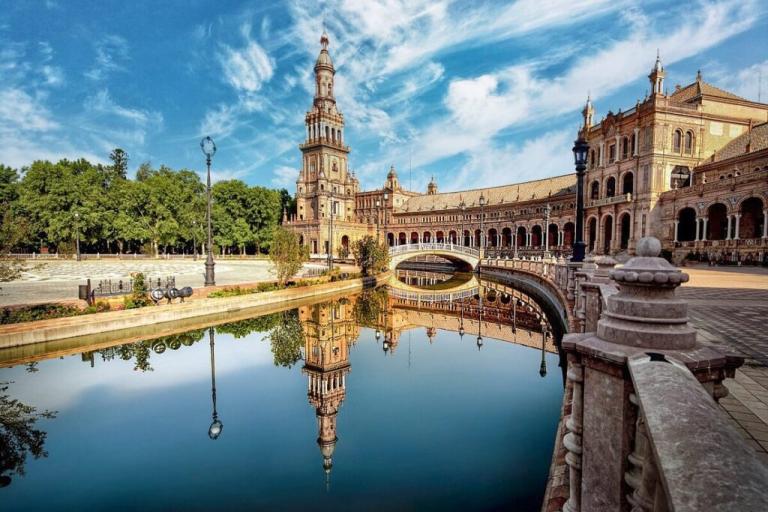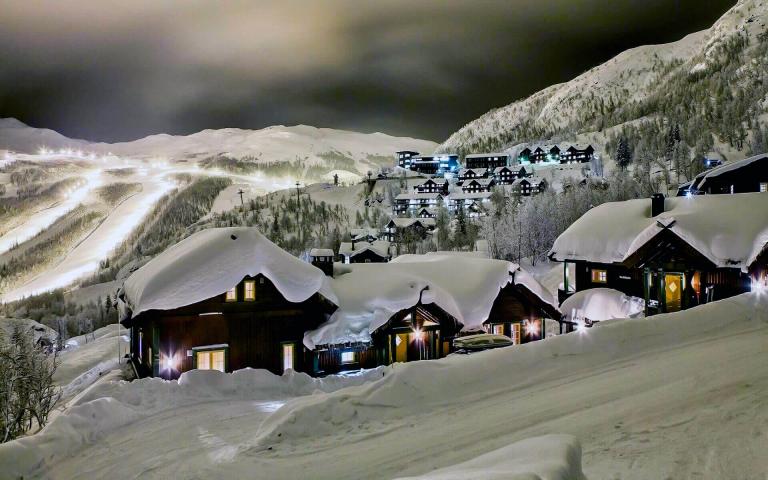Millions of visitors come to Spain annually because of its vibrant culture, fascinating past, and amazing scenery. Still, the real spirit of Spain is found…


Hemsedal, a municipality in Buskerud County, Norway, has a population of roughly 2,500 inhabitants. Tucked in the center of the classic Hallingdal area, this gorgeous location has grown to be a favorite spot for summer adventurers as well as winter sports aficionados. The little village of Trøym, which forms the hub for local government and community events, is the administrative centre of Hemsedal.
Hemsedal, which is along Norwegian National Road 52 (Rv 52), has a strategic location that keeps its rural appeal while making it easily reachable by big cities. Situated 220 kilometers northwest of Norway’s capital, Oslo, and 273 kilometers from Bergen, the second-largest city in the nation, the municipality This place lets guests and inhabitants enjoy the peace of alpine life while still being close to metropolitan areas.
The history of Hemsedal as an autonomous municipality dates back to 1897, when it was separated from the adjacent municipality of Gol. This independence was a key milestone in Hemsedal’s history, allowing it to define its own identity and handle its local affairs more directly. Establishing Hemsedal as a separate municipality reflected the area’s increasing significance as well as the citizens’ need for more autonomy.
Geographically, Hemsedal is bordered by a varied collection of nearby counties and municipalities that each add to the colorful fabric of Norwegian rural life. To the north, it shares borders with Vang and Vestre Slidre, both located in Oppland County. The Hemsedal has an eastern boundary defined by Gol, a western boundary that crosses Laerdal in Vestland county, and a southern boundary defined by Nord-Aurdal in Oppland county. This special location at the junction of several areas adds to the cultural variety and economic possibilities of Hemsedal.
Hemsedal’s terrain is distinguished by breathtaking natural elements, including immaculate lakes like Juklevatnet. These water bodies not only improve the beauty of the region but also play a significant role in the local environment and provide recreational possibilities for inhabitants and visitors alike. The existence of such natural resources has been crucial in forming Hemsedal’s reputation as a place of outdoor enthusiasts’ and nature lovers’ paradise.
Deep roots abound in the Hemsedal tourism business; one of its first prominent guests was the eminent Norwegian polar adventurer Fritjof Nansen. Staying in the Bjøberg Fjellstue, a mountain lodge still standing today as evidence of the area’s long-standing hospitality, Nansen visited in 1898. This visit by such a well-known person helped to establish Hemsedal on the map as a travel destination worth visiting, therefore paving the path for its future growth.
With its crown gem, the Hemsedal Skisenter, Hemsedal has grown to be a popular spot today. Seasonal attractions greatly affect the tourism trends in the municipality; around 70% of visitors arrive in the winter, from December to May. Drawn by the hiking trails, fishing areas, and other warm-weather activities in the region, the remaining thirty percent of visitors usually travel in the summer. With many companies and services targeted at supporting the flood of winter sports lovers, this seasonal flow of visitors has molded the local infrastructure and economy.
The municipality is becoming a top winter sports destination, thanks in great part on the Hemsedal Skisenter. With an amazing 44 kilometers of slopes to appeal to skiers and snowboarders of all ability levels, this second-largest ski resort in Norway The local economy has benefited much from the construction of this world-class institution, which draws guests from all throughout Norway and beyond.
The ownership and running of Hemsedal’s ski resorts changed significantly in 2000. The Swedish firm Sälenstjärnen bought the ski centers in Hemsedal and Grøndalen; it then changed its name to SkiStar in 2001. With this purchase, Hemsedal’s winter sports business entered a new chapter under the direction of a bigger, more seasoned operator with a track record of profitable ski resorts.
SkiStar’s engagement goes beyond Hemesedal since the business owns and runs several other well-known ski locations. These cover Sälen, Åre, Vemedalen, Hammarbybacken in Sweden and the Trysil Ski Centre in Norway. This affiliation with a larger network of ski resorts has further solidified Hemsedal’s position as a premier winter sports destination by allowing it to benefit from shared knowledge, marketing initiatives, and a larger clientele.
| Category | Information |
|---|---|
| Location | Hallingdal, Norway |
| Resort Altitude | 620-1,450 m (2,034-4,757 ft) |
| Ski season | November – May |
| Ski pass prices | Approximately37 € per day |
| Opening times | Lifts typically run until 16:30, with night skiing until 20:30 on Fridays |
| Number of pistes | 51 |
| Total piste length | 44.1 km (27.4 miles) |
| Longest Run | 6 km (3.7 miles) |
| Easy Slopes | 29.2 km (18.1 miles) |
| Moderate Slopes | 10.8 km (6.7 miles) |
| Advanced Slopes | 4.1 km (2.5 miles) |
| Directions of Slopes | N, N/W, W, S/E |
| Night skiing | Yes, available on Fridays |
| Snow Making | 325 snow cannons, covering 45% of slopes |
| Total Lifts | 20 |
| Uphill Capacity | 28,500 skiers per hour |
| Highest Lift | 1,450 m (4,757 ft) |
| Gondolas/Cable cars | 0 |
| Chairlifts | 6 |
| Drag Lifts | 12 |
| Snow Parks | 4 |
| Ski rentals | Available at the resort |
| Après-ski | Lively, with bars and clubs at the base and in Hemsedal village |
Currency
Founded
Calling code
Population
Area
Official language
Elevation
Time zone
Norway, formally known as the Kingdom of Norway, is a Nordic nation located in Northern Europe on the Scandinavian Peninsula, with a population of 5,576,660 as of 2024. Part of…
Kristiansand, a dynamic city and municipality in Agder county, Norway, is the fifth-largest city and sixth-largest municipality in the nation. With Søgne and Songdalen municipalities added, Kristiansand has a population…
Oslo, the capital and largest city of Norway, with a population of 709,037 as of 2022 inside its municipality. With 1,064,235 people living in the city's larger urban area, 1,546,706…
Tromsø, an active municipality in Troms county, Norway, has a population of 78,745, ranking it as the 12th most populous municipality in the nation. With 2,521 square kilometers (973 square…
Trondheim, located on the southern bank of Trondheim Fjord at the confluence of the River Nidelva, is the third most populated municipality in Norway, with a population of 212,660 as…
Millions of visitors come to Spain annually because of its vibrant culture, fascinating past, and amazing scenery. Still, the real spirit of Spain is found…

Discover the vibrant nightlife scenes of Europe's most fascinating cities and travel to remember-able destinations! From the vibrant beauty of London to the thrilling energy…

The 7 Wonders of the 21st Century feature amazing successes redefining human creativity and engineering capability. From the calm Temple of Buddha's Origin in Leshan,…

From Alexander the Great's inception to its modern form, the city has stayed a lighthouse of knowledge, variety, and beauty. Its ageless appeal stems from…

From Rio's samba spectacle to Venice's masked elegance, explore 10 unique festivals that showcase human creativity, cultural diversity, and the universal spirit of celebration. Uncover…

© All Rights Reserved. By Travel S Helper